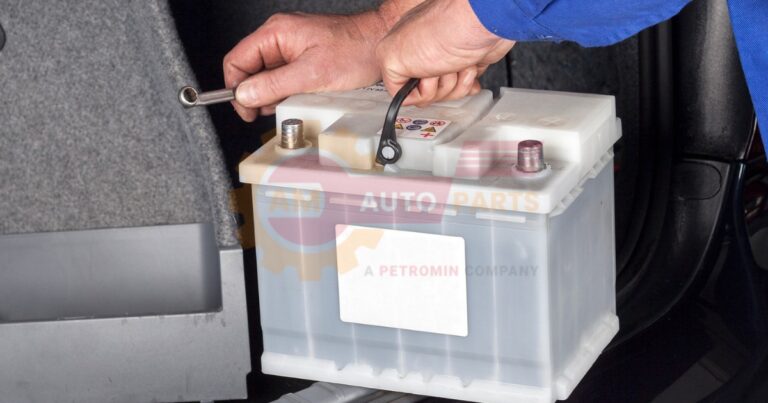Car Battery Voltage Explained
Understanding car battery voltage is crucial for maintaining your vehicle’s health. A car battery is how many volts? This question often arises among car owners, and knowing the answer can help you diagnose potential issues before they become serious problems. In this article, we will explore the standard voltage of car batteries, factors affecting their voltage, and how to identify signs of low voltage.
How Many Volts is a Car Battery
Standard 12-Volt DC Battery
Most car batteries are 12-volt DC batteries. This standard voltage is essential for powering the vehicle’s electrical systems, including the ignition, lights, and other accessories. The 12-volt battery is composed of six cells, each producing about 2.1 volts when fully charged, totaling approximately 12.6 volts.
- Standard Voltage : 12 volts
- Number of Cells : 6
- Voltage per Cell : 2.1 volts
Voltage Range for Healthy Batteries
A healthy car battery typically operates within a specific voltage range. When fully charged, a car battery should read between 12.6 and 12.8 volts. If the voltage drops below 12.4 volts, it may indicate that the battery is not fully charged or is experiencing issues.
- Fully Charged : 12.6 – 12.8 volts
- Low Charge : Below 12.4 volts
- Critical Level : Below 11.8 volts
Fully Charged Battery Voltage
A fully charged car battery should read around 12.6 volts. This voltage ensures that the battery can efficiently power the vehicle’s electrical systems. Regularly checking the battery voltage can help you maintain its health and prevent unexpected breakdowns.
- Optimal Voltage : 12.6 volts
- Check Regularly : To ensure efficiency
- Prevent Breakdowns : By maintaining voltage
Factors Affecting Car Battery Voltage
Duration of Use
The duration of use significantly impacts a car battery’s voltage. Over time, batteries naturally lose their ability to hold a charge, leading to a decrease in voltage. Regular maintenance and timely replacement can help mitigate this issue.
- Natural Degradation : Over time
- Regular Maintenance : Extends battery life
- Timely Replacement : Prevents voltage drop
Temperature and Environment
Temperature and environmental conditions can affect car battery voltage. Extreme temperatures, both hot and cold, can reduce a battery’s efficiency and lifespan. It’s essential to protect your battery from harsh weather conditions to maintain optimal voltage.
- Extreme Temperatures : Affect efficiency
- Protect from Weather : To maintain voltage
- Optimal Conditions : Extend lifespan
Load Magnitude
The load magnitude, or the amount of electrical demand placed on the battery, can influence its voltage. High electrical loads, such as running multiple accessories simultaneously, can cause the battery voltage to drop.
- High Electrical Load : Causes voltage drop
- Manage Accessories : To maintain voltage
- Monitor Usage : For optimal performance
Dust, Rust, and Grime
Dust, rust, and grime can accumulate on battery terminals, affecting the voltage. These contaminants can create resistance, leading to a drop in voltage and reduced battery performance. Regular cleaning of the battery terminals can help maintain proper voltage levels.
- Contaminants : Affect voltage
- Regular Cleaning : Maintains performance
- Prevent Resistance : For optimal voltage
Can a car battery be recharged?
Yes, a car battery can be recharged using a battery charger or by running the vehicle’s engine. Recharging can restore the battery’s voltage to optimal levels, but if the battery is old or damaged, it may not hold a charge effectively. In such cases, replacement may be necessary.
Car Battery Voltage While Running
Normal Operating Voltage
When a car is running, the battery voltage should be higher than when it’s off. Typically, the voltage should range between 13.7 and 14.7 volts. This increase is due to the alternator charging the battery while the engine is running.
- Running Voltage : 13.7 – 14.7 volts
- Alternator Charging : Increases voltage
- Monitor Regularly : For consistent performance
Alternator’s Role in Voltage Maintenance
The alternator plays a crucial role in maintaining car battery voltage. It charges the battery while the engine is running, ensuring that the battery remains at an optimal voltage level. A malfunctioning alternator can lead to a drop in battery voltage.
- Crucial Role : In voltage maintenance
- Charges Battery : While engine runs
- Check Alternator : To prevent voltage drop
Signs of Low Battery Voltage
Starting Issues
One of the most common signs of low battery voltage is difficulty starting the car. If the engine cranks slowly or doesn’t start at all, it may indicate that the battery voltage is too low to power the starter motor.
- Slow Cranking : Indicates low voltage
- Engine Won’t Start : Possible battery issue
- Check Voltage : If starting problems occur
Dim Lights and Electrical Problems
Dim headlights and other electrical issues can be signs of low battery voltage. When the battery voltage drops, it may not provide enough power to operate the vehicle’s electrical systems efficiently.
- Dim Headlights : Sign of low voltage
- Electrical Issues : May indicate battery problem
- Inspect Battery : If issues persist
Battery Warning Light
The battery warning light on the dashboard is a clear indicator of low battery voltage. If this light comes on, it’s essential to check the battery voltage and address any underlying issues promptly.
- Dashboard Indicator : Of low voltage
- Check Immediately : If light appears
- Address Issues : To prevent further problems
What voltage is too low for a car battery?
A car battery is considered too low if the voltage drops below 11.8 volts. At this level, the battery may not have enough power to start the engine or operate the vehicle’s electrical systems efficiently. Regularly checking the battery voltage can help prevent issues related to low voltage. Automotive power restoration helps fix electrical problems in cars It gets your vehicle running again when the battery or other power parts fail Lead acid composition
Car battery replacement timing Most car batteries last 3 to 5 years before needing replacement but this can vary based on usage and climate conditions Ideal car voltage A car battery should have about 12 to 14 volts for the vehicle to run properly
Charge depleted battery means your device has no power left You need to plug it in to recharge the Battery Issues Symptoms can include your device turning off suddenly or not holding a charge for very long Your phone or laptop might get hot or take a long time to charge when experiencing
Battery selection guide Choose the right battery for your device by looking at size voltage and how long it lasts
Different Types of Car Batteries and Their Voltages
Lead-Acid Batteries
Lead-acid batteries are the most common type of car battery. They typically operate at 12 volts and are known for their reliability and affordability. However, they require regular maintenance to ensure optimal performance.
- Common Type : 12 volts
- Reliable and Affordable : Popular choice
- Regular Maintenance : Required for performance
Lithium-Ion Batteries
Lithium-ion batteries are becoming increasingly popular in modern vehicles. They offer higher energy density and longer lifespan compared to lead-acid batteries. However, they are more expensive and typically operate at a similar voltage.
- Higher Energy Density : Than lead-acid
- Longer Lifespan : But more expensive
- Similar Voltage : To lead-acid batteries
NiCd and NiMH Batteries
Nickel-cadmium (NiCd) and nickel-metal hydride (NiMH) batteries are less common in cars but are used in some hybrid vehicles. They offer different voltage levels and require specific maintenance practices.
- Less Common : In traditional cars
- Used in Hybrids : For specific applications
- Different Voltage Levels : Require specific maintenance
Frequently Asked Questions (FAQs)
How do I know if my car battery needs replacing?
You may need to replace your car battery if you experience frequent starting issues, dim lights, or if the battery warning light is on. Additionally, if the battery voltage consistently reads below 12.4 volts, it may be time for a replacement. Regular maintenance and testing can help determine the battery’s health.
What causes car battery voltage to drop?
Several factors can cause car battery voltage to drop, including prolonged use, extreme temperatures, and high electrical loads. Additionally, dust, rust, and grime on the battery terminals can create resistance, leading to a voltage drop. Regular maintenance can help prevent these issues.
How long does a car battery typically last?
A car battery typically lasts between three to five years, depending on usage and maintenance. Factors such as driving habits, climate, and battery type can influence its lifespan. Regular testing and maintenance can help extend the battery’s life.
What is the difference between 6V and 12V car batteries?
The primary difference between 6V and 12V car batteries is their voltage output. 6V batteries are typically used in older vehicles and smaller applications, while 12V batteries are standard in modern cars. The higher voltage of 12V batteries allows them to power more advanced electrical systems.
How to test car battery voltage at home?
To test car battery voltage at home, you can use a multimeter. Set the multimeter to DC voltage and connect the probes to the battery terminals. A fully charged battery should read around 12.6 volts. Regular testing can help monitor the battery’s health.
Can weather affect car battery voltage?
Yes, weather can significantly affect car battery voltage. Extreme temperatures, both hot and cold, can reduce a battery’s efficiency and lifespan. Protecting the battery from harsh weather conditions can help maintain optimal voltage levels and extend its life.






